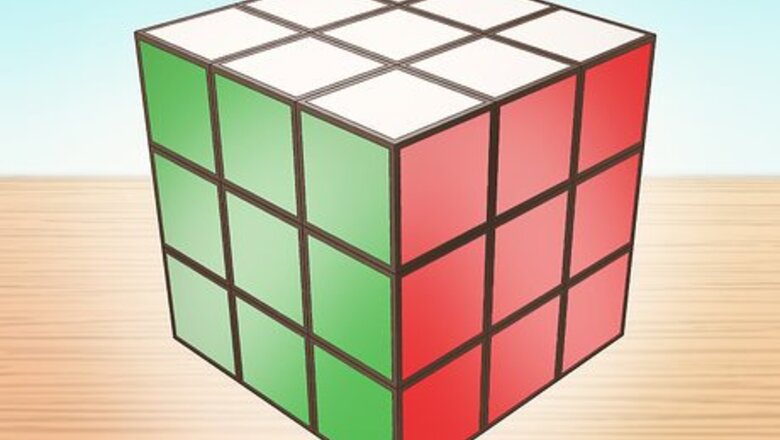
views
Speeding up the Cube
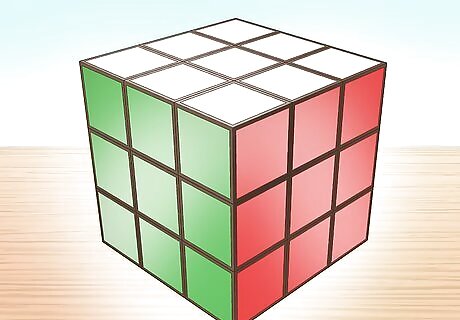
Invest in a quality Rubik’s cube. A quality cube's parts will move with ease, and they come in a variety of sizes, such as 2x2, 3x3, 4x4, or 5x5. Most people start off with a 3x3 cube. Go with options like Moyu, YJ, Dayan, Shengshou, GAN, or Fangshi (Funs puzzle).For speed-cubing stay away from the actual Rubik's brand. These cubes were not build for speed-cubing and are far worse than any speed cube. You can purchase them online or in stores. A good cube used to set past records only cost $9, though typically quality Rubik’s cubes cost around $15 and up (€4-20). A quality speed cube is helpful because turning takes very little force. Even if the layers aren’t perfectly aligned, the cube will still turn. You don't need to be completely accurate with every turn.
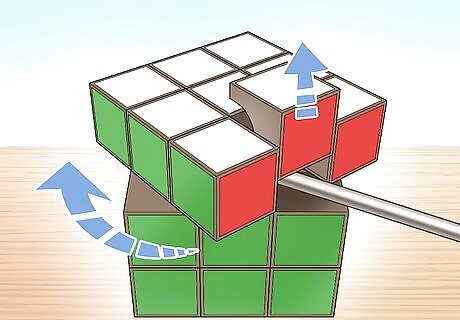
Disassemble your cube in order to lubricate it. Disassemble your cube by rotating the top face 45 degrees and popping out an upper edge piece. You can do this with your fingers, or use a screwdriver if you are having trouble.
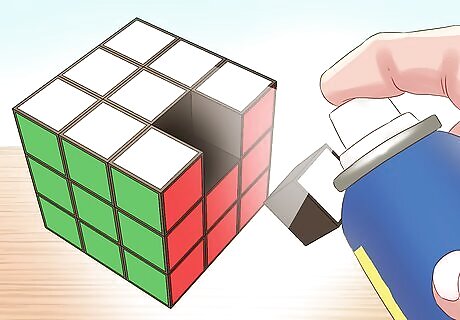
Apply a silicone-based spray or gel to the inside parts to lubricate your cube. Ensure you apply a light, even coat across all surfaces of your cube. Let your parts dry for about 10 minutes. You can also use petroleum jelly. Lubricating your cube can give you a move rate of 3 or 4 moves per second. Some heavy lubricants like cubicle weight 5, Traxxas, and Lubix will make your cube slow at first, though as you break in your cube, it will move faster and smoother. It may take a little while to get used to a Rubik’s cube moving this quickly. Practice solving your cube, and you’ll quickly notice how much faster you can solve the cube.
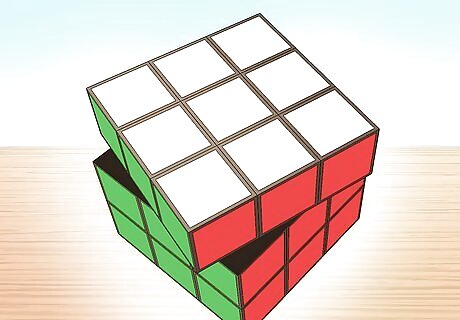
Reassemble your cube and test out how fast the parts move. Start with the edge pieces, popping in the pieces on one side. You can fit four pieces on the core of your cube, and then place the completed face in the down position. Slide in the four corners, then slide in the edges of the middle layer from the top. Repeat this until you have all pieces assembled, and your cube will now move really fast. To help insert the last layer, start with an edge piece slightly turned to the side.
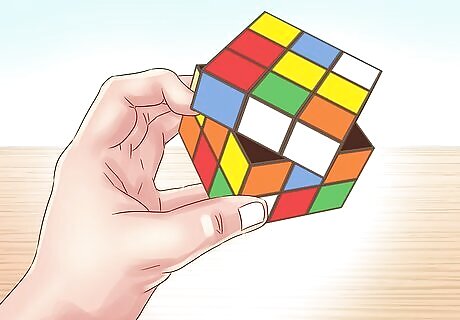
Break in your cube by practicing frequently. The more you practice, the more familiar you will be with moving around your cube’s parts. And, the more you move your cube, the more you will break it in and make it easier to maneuver.
Breaking Down the Process
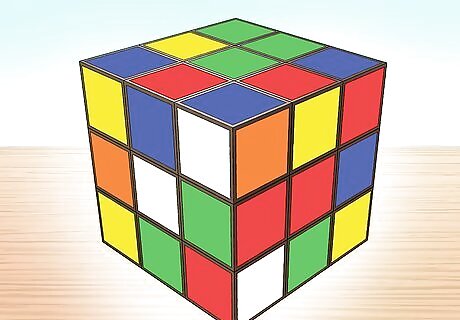
Solve a cube from many different sides rather than just one color. When learning how to solve a Rubik’s cube, it is helpful to start on the white side. Though, this isn’t always the easiest to solve. Be flexible and try different sides. The more you can maneuver your cube, the faster you can solve it.
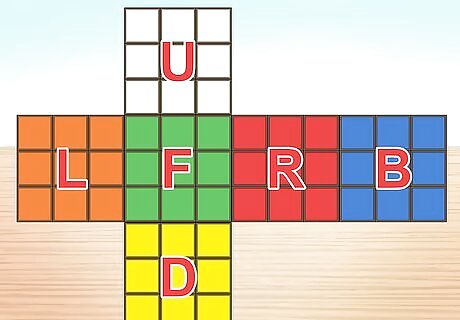
Experiment with algorithms to help you solve your cube faster. To understand how to move the Rubik’s cube, speed solvers mark every face of the cube with a letter: F- Front, U- Up, R- Right, B- Back, L- Left, and D- Down. Algorithms are codes made up of different movement combinations, and many different algorithms can be used to speed up the time it takes to solve.
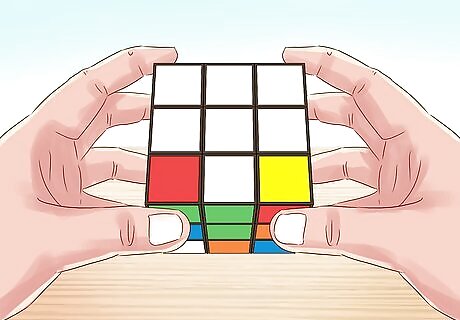
Master the CFOP Method. CFOP (also known as the Advanced Fridrich method) is the most popular method for speedsolving. There are four steps to this method: White cross, first two layers (F2L), orient last layer (OLL), and permute last layer (PLL).
Reducing Delays Between Moves

Plan ahead to reduce delays between your moves. Scramble the cube, and then take a second to notice the details before you start trying to solve. Think about your first few moves before you solve it. A little planning can help increase your speed by cutting down on the seconds spend deciding where to move next. For example, if you're using the Fridrich Method, practice your F2L. While you're solving one pair, look ahead to find your next pair. This eliminates any pauses in between your moves.
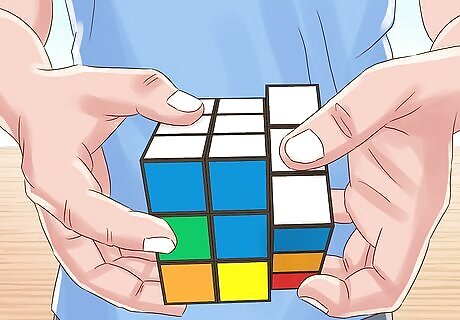
Practice as much as possible to master your cube. To be a speed solver, you must practice and practice some more. The more familiar you are with the cube and your moves, the easier it will be to speed up your solving time.
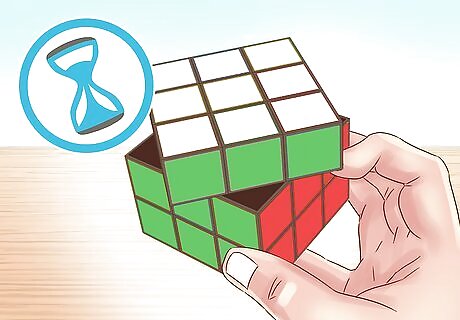
Aim to solve your cube in under 10 seconds, but have patience. If you get to be this speedy, you might be a contender for some world records! However, learn at your own pace to begin with. Understand that it takes time to master the moves and solve the cube super fast.
Using Finger Tricks
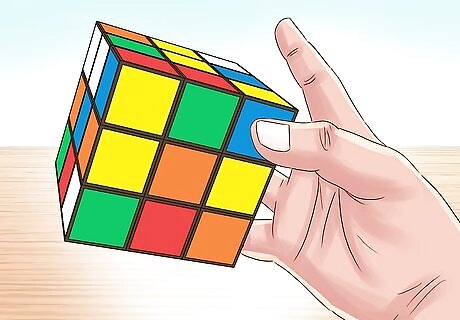
Learn finger tricks and shortcuts to perform faster moves. Finger tricks are extremely fast moves performed with only one finger. These shortcuts can reduce your solving time by up to 10 moves per second. Try U, R, L, and B moves. Finger tricks are easier to complete if your Rubik’s cube is lubricated
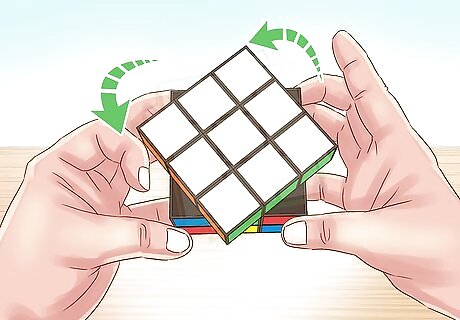
Perform U moves by using the index finger of both hands. Push the top layer in your desired direction while keeping your other fingers away from the top layer.
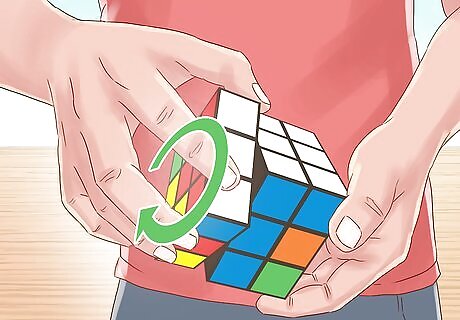
Complete R moves by holding the right face with your right hand. Keep your thumb on the bottom edge and your first three fingers on the top three pieces. Hold the cube with your left hand. Rotate your right wrist to perform the R and R2 move.

Do L moves with the same method as R, just inverted. Instead, use your left hand and hold the left face.
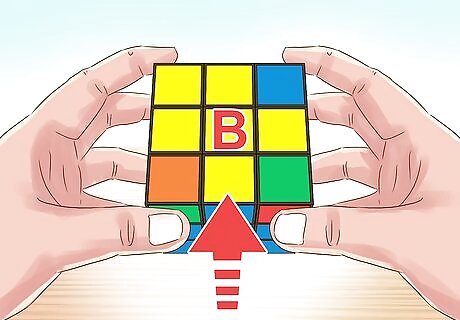
Perform B moves by rotating the puzzle so the B face is on top. Turn the cube as if the B face was the U face, and solve from this side. This move is tricky and rare in speedsolving.

Hold the cube from the middle and top layers to complete D moves. Using your thumb and first two fingers, hold the cube from the middle and top layers. Leave room for your pinky and ring finger behind the puzzle. Use either ring fingers to push the layer where you need to move it. D moves are the most difficult and take the longest to master.
Using Outside Resources
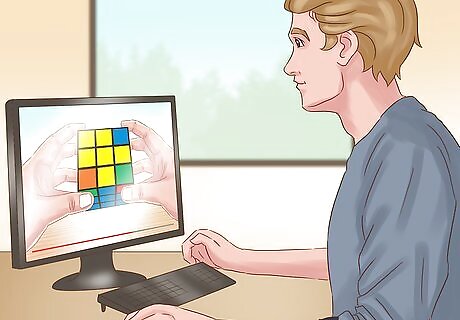
Watch video tutorials on the internet to learn speed techniques. Learn speed solving methods by watching other speed solvers online. There are many tutorials on YouTube. You can find videos on different techniques, algorithms, and finger tricks.

Learn different methods and theories. Many of the top speed solvers offer their own methods to help other speed solvers. Learning different strategies will give you many more options as to how to solve. With some practice, these techniques can improve your time. You can find tutorials on how to solve with different methods on Google or YouTube. For beginners, try Joël van Noort's solution, Jasmine Lee's solution, or Blake O'Hare's simple solution. For intermediate or advanced cubers, try Dan Knight's Intermediate and Advanced speed solve methods. For experts, try the Lars Petrus and Jessica Fridrich solutions. Ron van Bruchem has several algorithms for the Fridrich method on speedcubing.com, as well.

Use cube solving programs and software. Many speed solvers have created helpful programs and software to assist in solving the cube quickly. Cube Explorer and Cube Optimizer will help you discover the shortest algorithm for any cube. Download and install this program to try it out. Rubix Repair is an online cube solver, where you enter the colors on the cube and see a 3D representation of your cube. Dan Knights' Java Applet will show you the moves executed one step at a time, so you can follow along and learn how to solve them quicker.
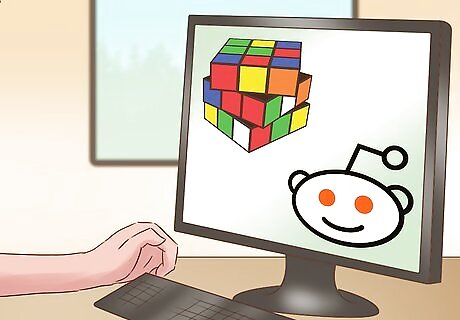
Join an online speedcubing community. Visit http://www.speedsolving.com or http://www.reddit.com/r/cubers, and try Facebook and Google plus. Speedcubing communities can offer help and tips for all skill levels. Start your own community. Gather some friends interested in speed solving, and learn together. Sometimes you can learn so much by teaching others. You can all practice different techniques and provide feedback on ways to improve.

Attend and enter competitions to learn speed solving techniques in person. The World Cube Association organizes competitions, and attending the tournaments is a great way to see how the professionals solve their cube. You can make friends and get hands-on help as well! Competitions are often organized by states, regions, or provinces. Find competitions on worldcubeassociation.org.



















Comments
0 comment